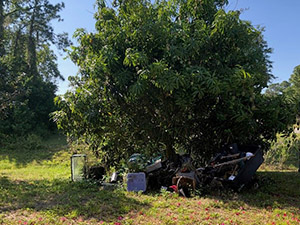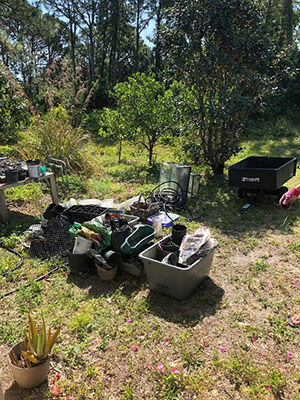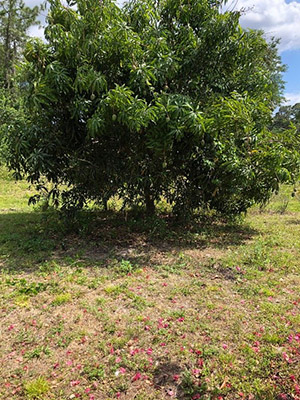Written By: David Larsen, PMP, LSSBB
Talking Shop
As a Lean Six Sigma practitioner, having relatable examples are important to connect with people in the workplace. Illustrating the concept of an improvement process and making it tangible can help provide a meaningful experience and connection with trainees that might otherwise never be possible. When at the workplace, it can be effective to discuss a relatable example that’s not a part of the work, but something that resonates with the team.
5S – Laying the Foundation
It’s difficult to lay the foundations of continuous improvement in an organization not accustomed to thinking this way. Beginning with 5S methodology as a foundation, to pivot the cultural mindset of an organization, can lead to change. Front-line teams may receive initiatives of improvement as “flavors of the month,” due to a lack of vision and/or communication by the leadership team. Communication is paramount to messaging these initiatives as a collaborative, call to action from the organization, to avoid a cold and distant voice from the top down. Effective and sustained change requires vision, strategy, planning, collaboration, communication, and commitment of the entire organization.
What is 5S?
5S is a five-phase framework, consisting of the following processes: Sort, Set in Order, Shine, Standardize, and Sustain.
Sort is the planning step: defining the scope, purpose or problem to be solved. Sort can specify what is valuable to the process or area owner. It can also help identify value by sorting value-added items from non-value-added items and uses visual management to clearly separate them. Non-value-added items can be removed from the process by means of “red-tagging.” Red-tagging is a process of visually managing items to determine their usefulness in a workspace.
Set in order is the do step. Once all non-value-added items are removed or red-tagged from the process, bring the value-added items back and Gemba the area. Arrange the items to promote efficient workflow of the process area. Consider Kanban systems where appropriate to allow material and consumable items to be pulled and restocked as needed. Begin to standardize the work area and supplies and use visual management to improve locating items and perform the process.
Shine is the check step. Does the effort accomplished through Sort and Shine make sense for the purpose of the workspace? Shine can be confused with cleaning the workspace. Shine can include cleaning, but this step can also ensure the workspace is arranged to support the workflow and pull systems. Leverage Gemba and visual management to identify within the workspace items that are missing, broken or needing attention. Level load the workspace and process it in such a way that the material and supplies are located where they are needed.
Standardize and Sustain involve action. Standardize the best practices, create and update standard work in order to close gaps and help to spread to similar process areas. Sustain by creating a plan to keep the gains of the effort. Put tools into action such as standard work, leader standard work, shadow boards, Kanban, daily checks, and periodic auditing. Seek perfection by continuing to spread the standardization to all similar areas to increase the gains of waste elimination and by looking for the next continuous improvement opportunity. 5S or every continuous improvement effort requires daily involvement. It’s not a one-time event.
5S can be facilitated and mentored to a team in such a way that mirrors the future state or direction an organization wants to take continuous improvement. 5S can be cross-walked into Plan-Do-Check-Act (PDCA), Define-Measure-Analyze-Improve-Control (DMAIC), Lean Fundamentals, or Lean House of Quality.
Develop Your Illustration
As an internal or external Lean Six Sigma consultant to an organization; building trust and relationships are important to support any project or initiative. Teams may not be receptive to business practices in another industry, and your experience and background may be challenged for its relevancy. How do you approach a project away from the office? Let’s consider a 5S project that takes place in the backyard of a home. Gardening is a relaxing hobby, but without guidelines and expectations, gardening projects can lead to clutter and eye-sore (detailed in picture 1).
The following represents a practical example to put the 5S process into practice by improving a backyard garden area.
Sort
The clutter of gardening containers, trash, and tools were moved from underneath the fruit tree to an open area. Working in an open area supported the ability to identify trash from usable containers (picture 2). A mower trailer was purposed into a red tag holding area.
The team defined three factors for determining whether to keep an item:
- An item’s usefulness
- The frequency it was used
- The quantity needed
The holding area was for items which were uncertain whether to keep but didn’t have a clear process location. The holding area was temporary, and guidelines were set for how long items should remain. The team discussed redundant items and minimum quantities of items.
Set in Order
The gardening work area was defined to a specific location of the backyard. Usable containers and items that were identified as a part of the gardening process were positioned to point of use. The team made decisions on redundant items and minimum quantities of items, placing extras in the red tag area for future disposition.
Shine
This was an opportunity to stop and check, and ensure the activities taken through the Sort and Set in Order steps were appropriate. Remember, the Shine phase is more than just cleaning the area. Waste of a poorly designed process was identified, and tools were located at point of use.
Standardize
A process flow for the gardening process was not defined or in place to support the work area. The current state of the gardening process exhibited waste in the forms of transportation, inventory, motion and extra-processing. A future state was defined by the team as a gardening process with job instruction, standard work, shadow board at the gardening work area, and a productive garden with reduced waste.
Sustain
Actions to support the future state were taken. The team agreed to the scope and expectations of the job instruction and standard work. An auditing plan was established, and daily checks were defined for the gardening process.
Putting Concepts Into Practice
In the workplace, talking shop is expected. When discussing continuous improvement projects, it’s a great opportunity to engage with high performing professionals and influence change. Relatable examples are adaptable, transferrable, and scalable to teams across venues and industries. These examples allow the facilitator to take a moment away from the work at hand, foster developing those relationships and inspire the team to move the work forward.
Bio: David is a certified Planning and Scheduling Professional, certified Project Management Professional (PMP®), Lean Six Sigma Black Belt, author, and podcast guest with more than 20 years of experience in healthcare, manufacturing, quality, and process improvement. Success comes from challenging the current state and asking tough questions. He coaches and develops others while practicing servant leadership; striving to establish collaborative and trustful relationships with individuals at all levels. He has experience leading large and complex cross functional project teams, coaching team members, and facilitating for success. A principle that he believes to be fundamental is learning to take every challenge as either a gateway to success or an opportunity to learn.
Social Media:






